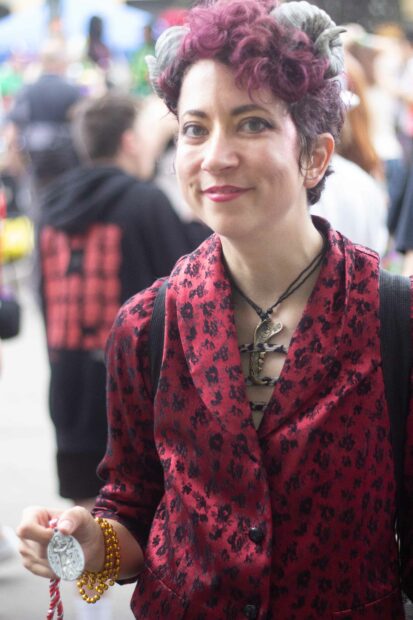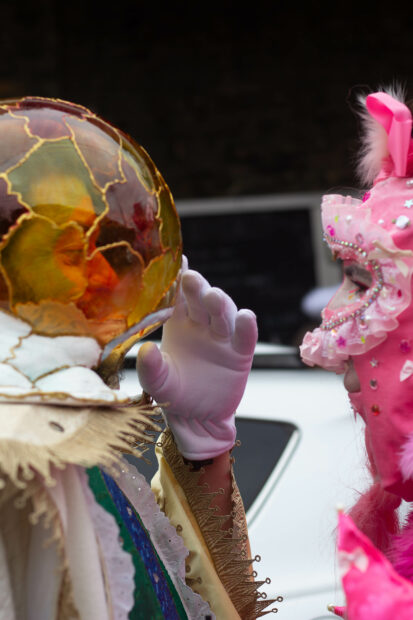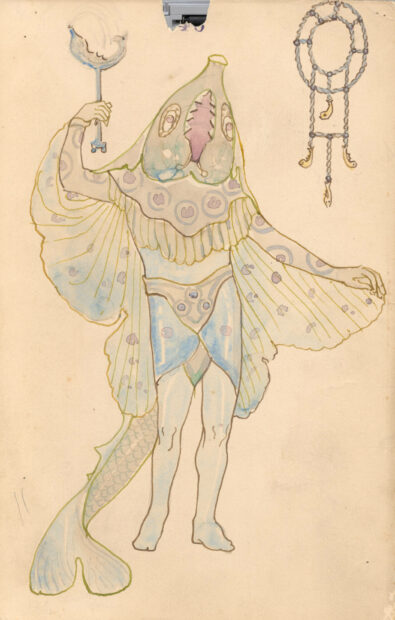This February, while visiting New Orleans to investigate Mardi Gras costume design, I had the pleasure of running into Darcy Neal, a circuit board designer and artist originally from Texas. Neal’s relocation to Portland in 2016 has been pivotal in defining their artistic trajectory. They have held various roles throughout their career, from building synthesizers to running academic makerspaces to building projects from reclaimed materials, they have always had a fascination with using technology to assist their creative ventures. One of Neal’s latest ventures involves creating functional circuit boards that double as a visual medium, a unique blend of technical prowess and artistic ingenuity. At one parade, Neal and I discussed their repeated visits to New Orleans for Carnival season. We later reconvened in Dallas after Mardi Gras festivities to discuss their perspective on the creativity that envelops the city.
****
William Sarradet (WS): What about New Orleans did you not expect?
Darcy Neal (DN): I was so surprised, when I went, to discover how much creativity there was. All of the festivities. Because my idea of Mardi Gras was Bourbon Street — people getting drunk.
WS: I’ve seen that too. In college, we went to New Orleans for printmaking school because the Southern Graphics Council International (SGCI) had their big conference there. We hung out in the hotel and went to Bourbon Street a couple of times and came back, and that was our entire experience.
DN: That’s a totally different experience.
WS: I think they’re analogous. It’s just that Bourbon Street is where all the tourist Mardi Gras energy is siphoned permanently for the people that want to do that. I don’t want to just talk about New Orleans in terms of authenticity, but the mythos of Bourbon Street is a big part of the culture there. Whether you’re doing a fake voodoo thing or a real voodoo thing. With the parties that we went to, I thought, “Oh, these are the people in America that prioritize creativity over all else.”
DN: People go [to New Orleans] specifically to live out their artistic dreams. You know, it depends on what kind of art you’re into, whether it’s the right fit or not, but for me, the artists that I see there have a more feral, unhinged kind of creativity. People who are into performance art, people who are really into doing circus stuff; it’s major for that. It’s still relatively affordable to live. People are making art out of everything that they can find around them. Some of the floats and stuff were just built out of trash, like cardboard and palm leaves and stuff.
WS: What do you think about the attitude or ethos around materiality in New Orleans? It is exactly what you just described. People are not precious about anything. Trash and material degradation is kind of all around you. People revel in that in New Orleans.
DN: You’re in the Deep South, essentially. Access to wealth is a little bit more difficult to come by there, and especially in New Orleans, because where it’s located. You have to drive eight hours to get to the next major city, which is Houston. But in terms of creativity, the access to that is through the roof, in a way. I think it is just a place where you can go and live as an artist and get by on very little, and you are making art out of anything that you have. So, some of it is maybe a choice to adhere to that tradition, but some of it is just out of necessity. I feel weird being dressed up wearing my stuff that I bought from Amazon out there.
WS: That was the anxiety I had as well. Even before I landed in New Orleans, I was like, “I probably shouldn’t just buy a lobster body suit from Temu. I have to make it, and then it’s going to be better.”
DN: Ideally, use your creativity to make your costume come to life. It’s ok to purchase things, just try to make it unique and participate in the creative act. That’s kind of the thing that I see at any event, whether it’s Burning Man or something else: you’re either the creator or you’re the consumer. It’s up to you which side you want to be on. You can use access to whatever materials you have that might be bought, but if you’re using them in a creative way, then you’re gonna fit right in.
WS: I think that for the parades we went to, “Witches” and “Monster,” it was communicated to me beforehand that there’s a pretty big priority on creating your costume. Either in concept or in the physical making of it. And I agree with you — by the time the week was over, I was like, “people are pretty chill. No one’s that mad.” It’s more that people want you to get as much out of it as you can. And you’re gonna get more out of it if you engage in the collective theme. No one’s gonna excommunicate you for the most part. But there might be some parties that are pretty strictly themed.
DN: None of the ones that I went to were ever gonna excommunicate you. They want you to participate. They want you to be creative. Nobody’s paying admission to get to these things. They’re not trying to be a spectacle to entertain you. Everybody’s just existing and expressing their creativity.
We had a newbie who was with us. They kept on pulling their camera out and recording everything, right? We didn’t correct them, but that was not a great thing to do. That’s more of the consumption. Be there, be a part of it. Show your expression. It’s just a mode. The point of it is engaging in those modes of expression and participating. I go to New Orleans to refuel myself creatively. I’m just so inspired by all the things around me. Stepping back and seeing people creating with anything they can find is really reinvigorating for me.
WS: To your point, the fact that every year everyone intentionally puts away their laptops and even their cell phones becomes more and more striking. People go to the streets and they’re not doing anything other than celebrating. When you experience that you’re like, “oh, a workless world is actually possible.”
DN: The counterpoint to that, though, is the definition of work. Showing up to your job and doing stuff that you get paid hourly to do is a lot. A lot of businesses close during Mardi Gras, for good reason. The property next to us was under construction. And they all stopped that entire final week of Mardi Gras. You know what I mean? It’s just like, you stopped working, but the creatives are working nonstop getting their costumes ready.
The Mudlark Theater folks are the ones who put on the Eos parade that happened at 6 a.m. They start along the waterfront with the sunrise. You had to get there at 5:30 in the morning, and then they marched over to somewhere in the Bywater and did another performance there. So, they are up all night [working on their costumes]. People are turning away from the capitalist world to focus on immersing themselves in the creativity around them. So, just as a counterpoint: you don’t have time to work your job. When you’re in Mardi Gras, you are in it.
WS: The priorities shift, what’s possible with your time and your energy. When I got there, I kind of realized that. My cohort had told me, “Look, Friday through Wednesday, No one’s gonna be reachable. You’re just gonna have to be on your feet, walking the route, and life will come to you.” Which is totally great. But if you’re a journalist, so to say…
DN: Get your business card ready.
WS: Yeah, ‘We’ll talk later.’ But, I mean, Mardi Gras is for that too. That’s kind of how we ran into each other.
DN: The Thoth parade is one of the ones where they dish stuff out. Usually [at other parades] they’re just throwing beads, beads, beads. That one was stuff like notepads, water bottles, playing cards, hats. But yeah, even that is its own totally different side of weird consumption. One of the people that we were with was collecting stocking stuffers for her grandkids, so I got eight footballs for her.
WS: I was just gonna say it’s also, uniquely, a 100% outdoor experience. I don’t know where else you would get that level of outdoor and urban mix, because in a lot of situations, if a crowd is outdoors, it’s interrupting the continuity of urban life. A lot of cities either regulate that or don’t tolerate it at all. But it’s lovely, because you can walk everywhere. You’re in a city, you’re surrounded by people, but you don’t have to be inside a room, inside an indoor space.
DN: Exactly. Even the bars and restaurants and storefronts are all just open to the streets.
WS: For the smaller parades, you either meet at or find the parade route at a bar. But the thing is, everyone’s outside. You walk into the bar to get a drink, and there’s like two people in there. I thought it was so illustrative that the bar is the meeting place, but you’re not using the indoors. Life happens on the street. We’re from Texas; it’s pretty hard to do that for a number of reasons.
DN: Totally. People are blocking the streets, cars have to back up and go somewhere else.
WS: Or it’s 110 degrees. Every road is basically a freeway, all that stuff.
DN: In New Orleans, the whole backbone of their economy is based on tourism for different events. So whether it’s St. Patrick’s Day, Valentine’s Day, Christmas, Halloween, you know, every other holiday or event that you could think of, they have parades. Mardi Gras is just the biggest one. I’ve heard amazing things about Halloween. The Christmas parades are supposed to be really charming. It goes on and on and on. There is so much deep history to it. Even in the oldest photos that I could find online, some of the floats are exactly the same.
WS: I was also struck by how deeply rich the aesthetic history is in New Orleans. I went to the library to look and see if their archives contain any costume design history, and found they have at least one collection of watercolor costume designs from the early 20th century. It goes in a lot of different directions. Everything kind of ends up in the application that you’re talking about: tourism or events. I wanted to spend another couple of weeks at the library, but just didn’t have time.
William Sarradet is the Assistant Editor of Glasstire.
This interview has been lightly edited for length and clarity.








1 comment
Voodoo can cause a lot of damage in a person’s life.